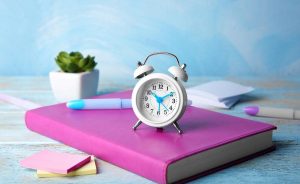
Studies have shown that students learn more effectively when they take notes with a pen instead of a keyboard. I find similar results in my own life.
I’m much more likely to remember things I wrote by hand. It’s also easier for me to solve complex problems on paper than it is with a keyboard. And sometimes, I just need to dump out all my thoughts into a notebook so I can see them. It makes whatever I’m working on easier to manage.
Turns out that even when you run an online business, sometimes the best tool for the job isn’t digital, it’s analog.
In this episode, I’m taking you behind the scenes at Cindy Bidar HQ to explore the analog tools that fuel my creativity, and that keep me organized and productive.
Prefer a transcript? Here you go!
What you’ll learn in this episode:
- Why a whiteboard is my favorite brainstorming tool
- How to make sales funnels easier to build by drawing a map
- Three ways I use index cards and sticky notes
- The important job a simple legal pad does for me
- My favorite journal and how I use it
- How I migrate ideas from analog to digital storage for long-term use
Resources mentioned:
- Six-Figure Systems is my monthly program where I help you plan, build, and grow a six-figure online business. Start your $7 trial today and see everything that’s included.
- Quick & Easy Course Creation details exactly how I create my courses, including how I plan them using index cards.
- How to Use Time Blocking to Get Stuff Done
- How to Create Your Course Outline Fast
- The basic index cards I use every day.
- I keep this legal pad on my desk for quick notes.
- My favorite notebook for journaling, to-do lists, and project planning
- I often move my temporary notes into Trello or Flowlu. Asana is a good choice as well.
- The Bullet Journal is Ryder Carroll’s method for staying organized using nothing but a notebook and a pen. He wrote a book about it, too.




